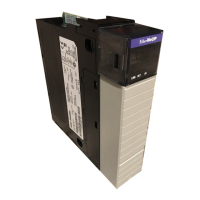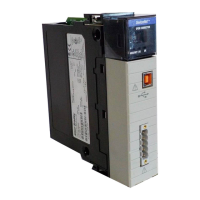Rockwell Automation Publication MOTION-RM003I-EN-P - February 2018 315
motor current and voltage signals, or automatically switch to a scaled version of a
redundant feedback device. In the case of redundant feedback, Feedback 1 is called
the primary feedback source and the redundant channel is the called the secondary
feedback source.
Feedback n Velocity Filter Taps
Usage Access Data
Type
Default Min Max Semantics of Values
Optional - E Set/SSV UINT 1 1 maxint Delay Taps (>= 1)
The Feedback n Velocity Filter Taps attribute determines the number of delay
taps used in the FIR Filter differencing algorithm to estimate velocity from
Feedback n. A simple difference of 1 sample period is equivalent to a 1 delay tap.
Feedback n Accel Filter Taps
Usage Access Data
Type
Default Min Max Semantics of Values
Optional - E Set/SSV UINT 1 1 maxint Delay Taps (>= 1)
The Feedback n Accel Filter Taps attribute determines the number of delay taps
used in the FIR Filter differencing algorithm to estimate acceleration from
Feedback n. The Acceleration FIR filter can be implemented as two cascaded FIR
filters each configured according to the Feedback n Acceleration Filter Tap
setting. A simple difference of 1 sample period is equivalent to 1 delay tap.
Feedback n Velocity Filter Bandwidth
Usage Access Data
Type
Default Min Max Semantics of Values
Optional - E Set/SSV REAL 0
FD
0
Filter Frequency Units
The Feedback n Velocity Filter Bandwidth attribute controls the bandwidth of
the Low Pass Filter applied to the raw velocity signal from Feedback n. A value of
0 for this attribute disables this feature.
Feedback n Accel Filter Bandwidth
Usage Access Data
Type
Default Min Max Semantics of Values
Optional - E Set/SSV REAL 0 0
Filter Frequency Units
The Feedback n Accel Filter Bandwidth attribute controls the bandwidth of the
Low Pass Filter applied to the raw acceleration signal from Feedback n. A value of
0 for this attribute disables this feature.

